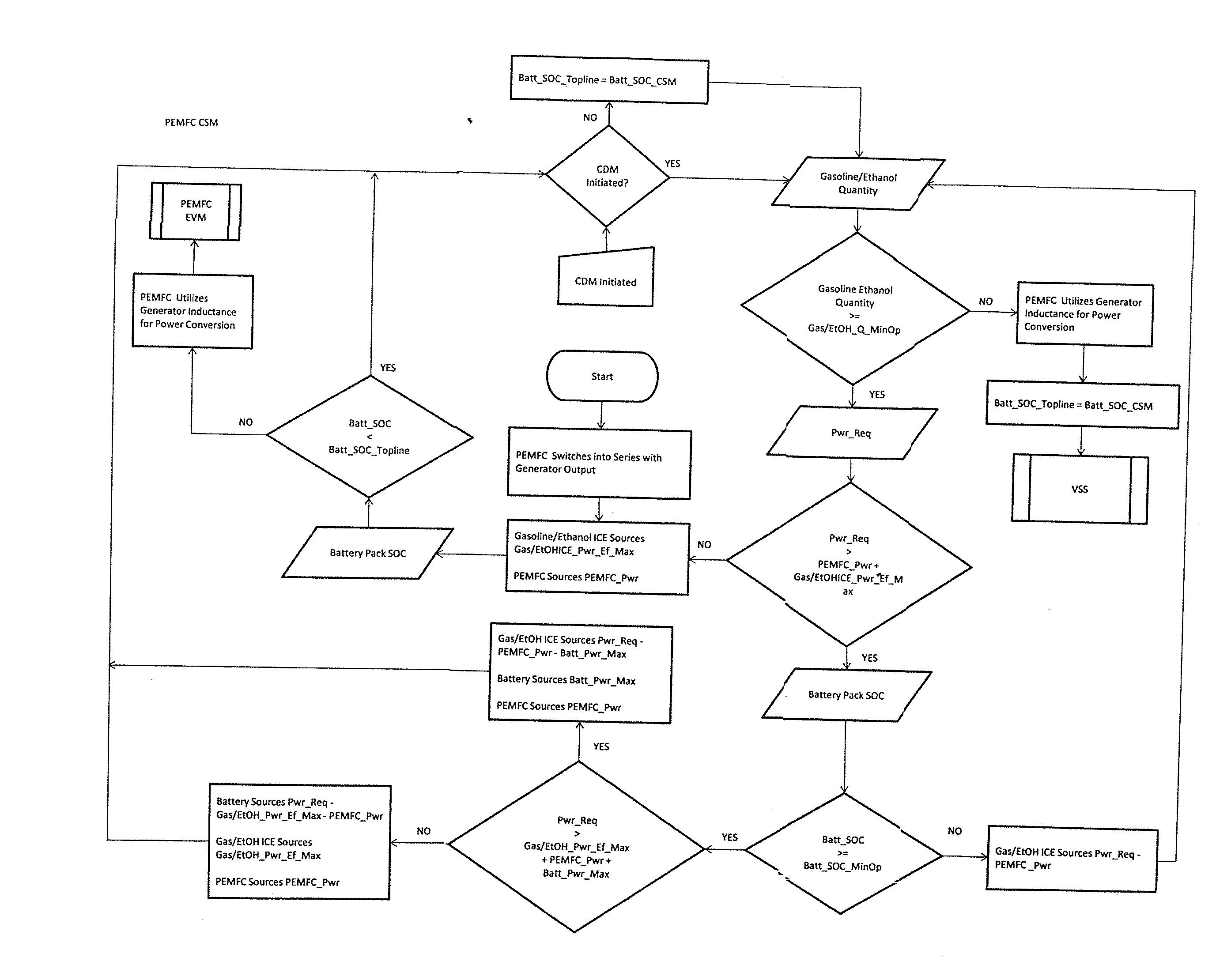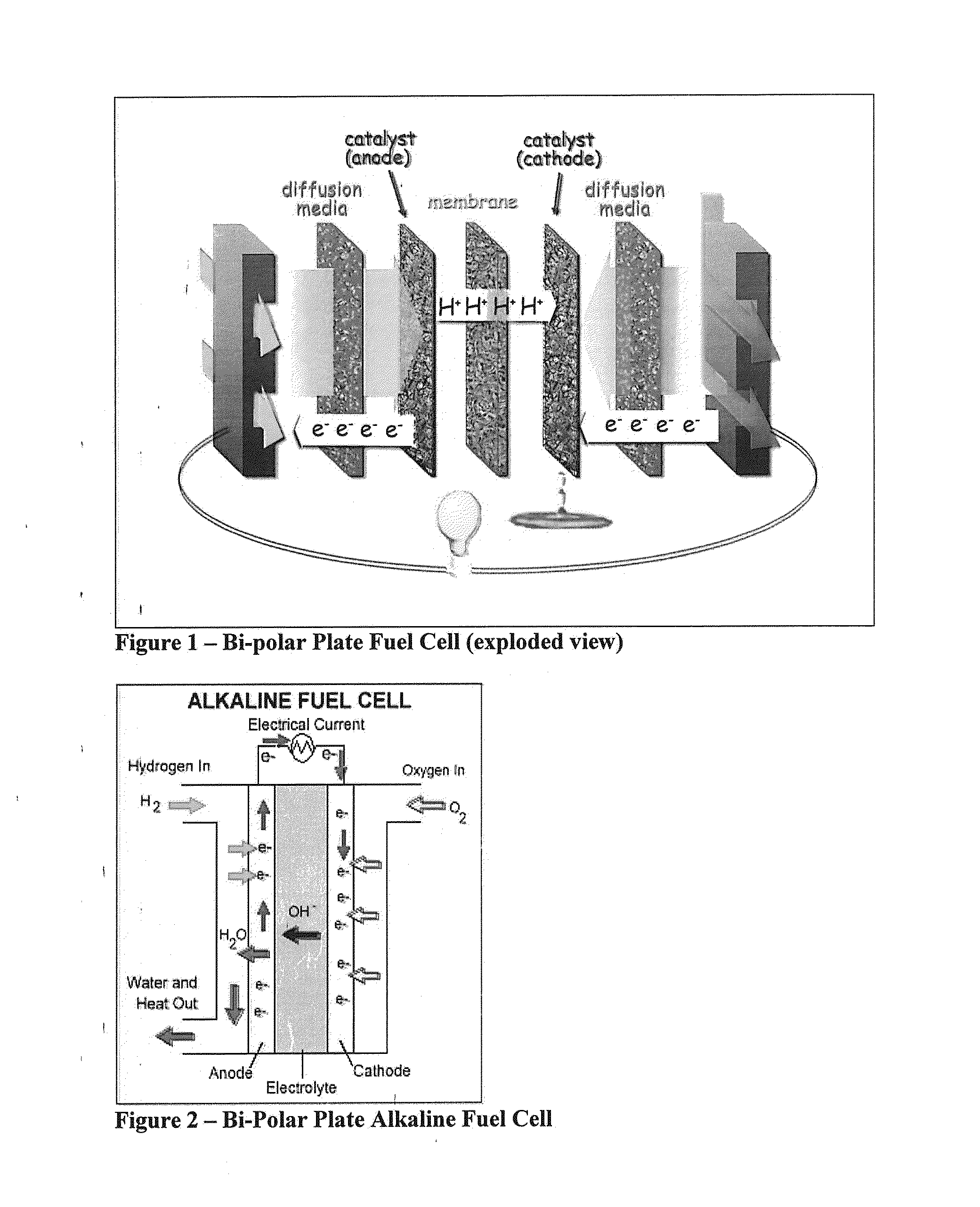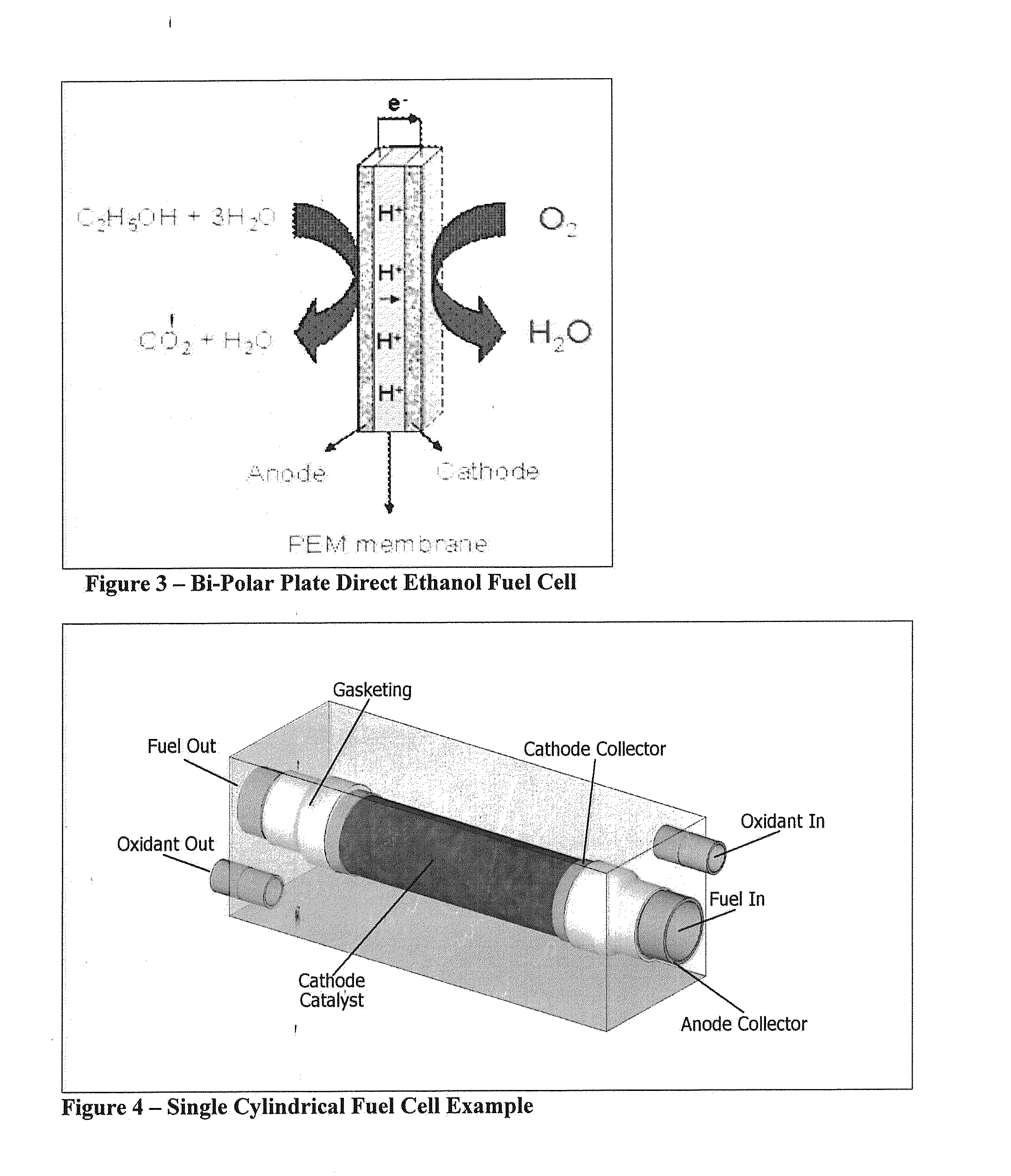Tri-hybrid automotive power plant
a technology of hybrid power plants and automotive power plants, applied in the direction of propulsion parts, gas pressure propulsion mounting, process and machine control, etc., can solve the problems of increasing the cost of gasoline, extraordinary negative impact of using fuel on the environment, and biofuels that have not yet proven cost-effective effects
- Summary
- Abstract
- Description
- Claims
- Application Information
AI Technical Summary
Benefits of technology
Problems solved by technology
Method used
Image
Examples
example 1
[0034]A compact car could employ a 5-6 kW fuel cell stack 14 and 10-12 kWh of battery pack 16. This could allow for about a 35-40 mile, gasoline free one-way trip. A likewise gasoline free trip of the same distance could be achieved after the fuel cell stack 14 is allowed to recharge the batteries for roughly 2-3 hours providing a hydrogen gas tank on board that holds around 1 kg of gas. The aforementioned example, scaled up to different size vehicles, can eliminate the need for gasoline in greater than 90% of commuters in the United States, and do so cost effectively when compared to a similarly classed gasoline ICE powered vehicle.
[0035]One other item regarding power plant operation is the use of “power profiles” that the motorist can select for certain performance characteristics. An example would be a profile that caters to long distance trips where the ICE is actually run at a very low power, high efficiency setting to extend the range of the vehicle. This would be better than ...
PUM
 Login to View More
Login to View More Abstract
Description
Claims
Application Information
 Login to View More
Login to View More - R&D
- Intellectual Property
- Life Sciences
- Materials
- Tech Scout
- Unparalleled Data Quality
- Higher Quality Content
- 60% Fewer Hallucinations
Browse by: Latest US Patents, China's latest patents, Technical Efficacy Thesaurus, Application Domain, Technology Topic, Popular Technical Reports.
© 2025 PatSnap. All rights reserved.Legal|Privacy policy|Modern Slavery Act Transparency Statement|Sitemap|About US| Contact US: help@patsnap.com



